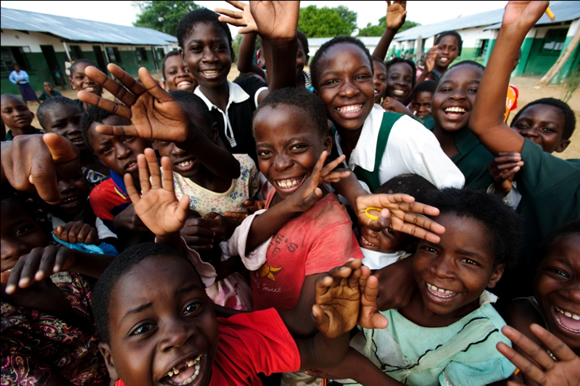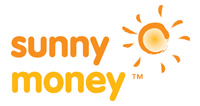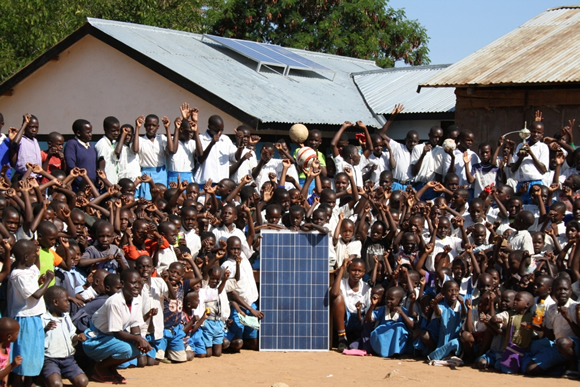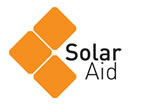To date, SolarAid has installed over 150 rural solar systems in Africa and plans to double this number in the coming year. With only a small fraction of people living in rural Africa currently enjoying access to electricity, SolarAid is planning to increase the scale of its work so that it can reach as many people as possible and continue to contribute towards the growth of solar market in Africa.
SolarAid - A growing solar charity increasing access to electricity in rural Africa
John Keane | SolarAid
Over 1 billion people on the planet are living without access to electricity – the majority living in rural areas in developing countries. In rural Africa, barely 2% of household have access to the electricity grid. SolarAid is growing international organisation which was set up to help tackle this problem through providing households, schools, clinics and community centres in rural Africa with access to viable, affordable and clean solar energy options.

Students at Kaanja school in rural Zambia celebrate the arrival of the SolarAid team
Credit: Steve Woodward
Credit: Steve Woodward
Life without access to grid electricity means that schools and clinics are limited in the quality of services they can offer communities. It also means that people living in rural Africa are invariably living in near darkness once the sun goes down, burning kerosene, candles and wood fires in return for poor quality lighting each night. Ironically, people often have to pay more for access to poor quality energy solutions, such as kerosene, candles and disposable batteries than if they were living in areas connected to grid electricity. Mobile phones, meanwhile, have taken Africa by storm in recent years – but people in off grid areas still have to pay someone else each time they want to charge up and speak to someone.
In addition to promoting solar energy through mobile solar demonstration centres which travel to rural villages in Africa and providing teachers with teaching resources to help educate people about solar energy, SolarAid runs a number of programme initiatives which are designed to help increase access to electricity.
SunnyMoney Programme
 Under the name SunnyMoney, SolarAidprovides opportunities and business training for enterprising people to market low-cost solar systems that are tailor-made to satisfy local demands for affordable levels of electricity – we call this ‘microsolar.’ Typical microsolar products offer lighting, radio playing and mobile phone charging solutions, saving rural African households money each week which can be better spent on other needs, such as sending children to school.
Under the name SunnyMoney, SolarAidprovides opportunities and business training for enterprising people to market low-cost solar systems that are tailor-made to satisfy local demands for affordable levels of electricity – we call this ‘microsolar.’ Typical microsolar products offer lighting, radio playing and mobile phone charging solutions, saving rural African households money each week which can be better spent on other needs, such as sending children to school. The microsolar industry is enjoying a particularly exciting period as more manufactures are entering the market with affordable products on the back of improvements to LED lighting and battery technologies. SolarAid’s job is to help people living in rural Africa gain access to these products through sustainable distribution networks. To date, over 10000 microsolar products have been sold by SolarAid trained solar entrepreneurs, creating business opportunities while saving people money.
Community Solar Installation Programme
In order to improve the quality of services offered at rural schools, clinics and community centres, SolarAid works with local communities to install heavily subsidised solar systems that offer lighting and power appliances such as vaccine refrigerators and computers. Lighting enables students to study in the evening and is vital in clinics which often need to help deliver babies after dark. It also offers the opportunity for people to carry out income generation activities, such as sewing, into the evening.
To help prevent the risk of system failure, SolarAid works with communities in order to give solar systems the best chance of success. We do this in a number of ways:
- Communities contribute towards the cost of instsalling a system. This creates a sense of community ownership and responsibility towards a system.
- SolarAid trains local technicians who can then repair systems in the future.
- SolarAid also offers trainings to the people who will be using the systems so that systems are well understood and maintained and not misused.
- The cost of maintaining a system in the future is also carefully explained so that the community committees managing the system can develop a business plan that will help ensure funds are available in the future to replace batteries and other system components.
To date, SolarAid has installed over 150 rural solar systems in Africa and plans to double this number in the coming year. With only a small fraction of people living in rural Africa currently enjoying access to electricity, SolarAid is planning to increase the scale of its work so that it can reach as many people as possible and continue to contribute towards the growth of solar market in Africa.

Students at Nyangwayo School in Muhuru Bay, Western Kenya celebrate their solar installation.
Photo Credit - SolarAid
SolarAid secures funding for its work through a variety of sources and enjoys the support of the international solar community with actors such as solarcentury in the UK and Sunpower in the USA providing funding, equipment and volunteers that help us bring ‘solar power to the people.’
About the Author:
 John Keane is the Head of Programmes of SolarAid, an international charity set up to fight poverty and climate change through increasing access to solar energy in Africa. SolarAid has grown from a handful of part time, dedicated, volunteers in 2006, to an organisation with teams operating in the UK, Kenya, Malawi, Tanzania and Zambia. To date, SolarAid has installed over 150 solar systems on rural schools, clinics and community centres and introduced solar products to over 10000 households in Africa.
John Keane is the Head of Programmes of SolarAid, an international charity set up to fight poverty and climate change through increasing access to solar energy in Africa. SolarAid has grown from a handful of part time, dedicated, volunteers in 2006, to an organisation with teams operating in the UK, Kenya, Malawi, Tanzania and Zambia. To date, SolarAid has installed over 150 solar systems on rural schools, clinics and community centres and introduced solar products to over 10000 households in Africa.John has been actively promoting practical solar energy solutions for Africa since living without electricity in a rural Tanzanian village in 2001. He can be reached at john@solar-aid.org.
For more information about SolarAid, visit www.solar-aid.org
For more information about SolarAid, visit www.solar-aid.org
The content & opinions in this article are the author’s and do not necessarily represent the views of AltEnergyMag
Comments (0)
This post does not have any comments. Be the first to leave a comment below.
Featured Product
SOLTEC - SFOne single axis tracker
SFOne is the 1P single-axis tracker by Soltec. This tracker combines the mechanical simplicity with the extraordinary expertise of Soltec for more than 18 years. Specially designed for larger 72 an 78 cell modules, this tracker is self-powered thanks to its dedicated module, which results into a lower cost-operational power supply. The SFOne has a 5% less piles than standard competitor, what reduces a 75% the labor time.
